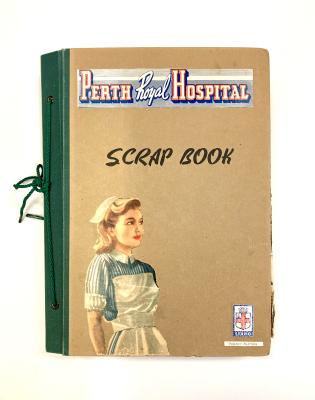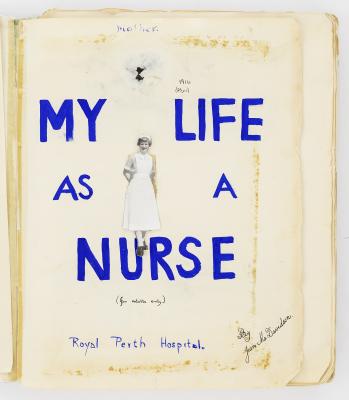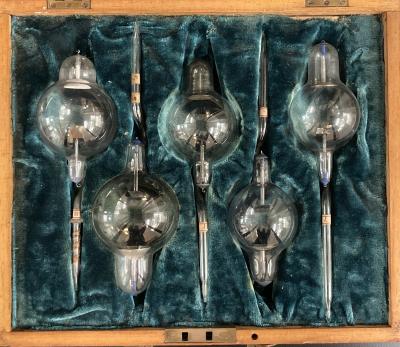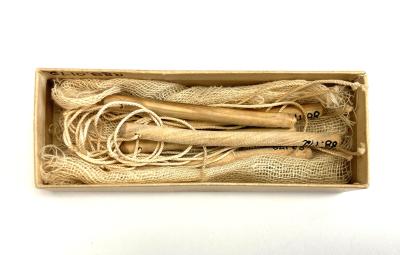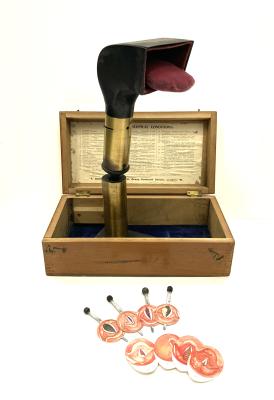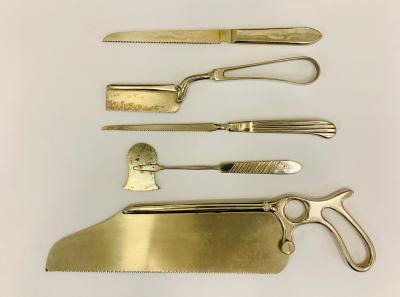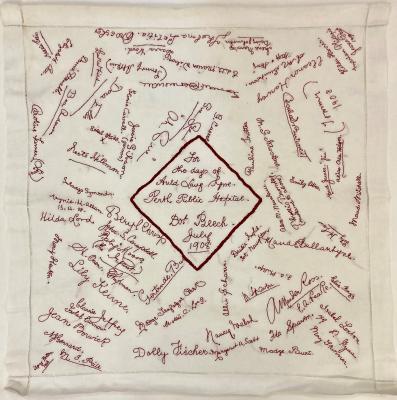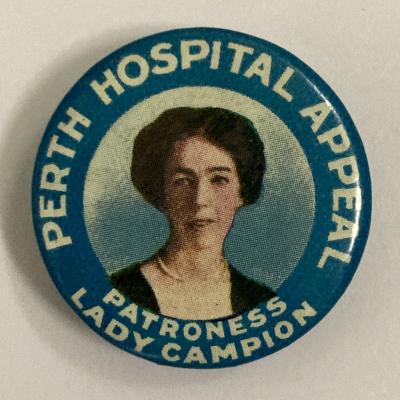ANAESTHETIC MACHINE
c. 1940Hand built anaesthetic machine made with brass, glass bottles and rubber tubes and stoppers. This machine was probably used for ether/chloroform intratracheal insufflation. It is reported to have belonged to, and been made by, Dr Douglas 'Bunny' Rose Campbell Wilson. The machine consists of an ether bottle with air/ether regulating tap, a chloroform bottle, a mercury safety valve and metal hot water container mounted on a metal base. There is space for a missing mamometer or thermometer.
Douglas ‘Bunny’ Rose Campbell Wilson (b1906 – d 1970) was the first full-time anaesthetist in Western Australia. After graduating from medical training in 1931 he was Resident Medical Officer at Perth Hospital for one year. He then worked in general practice in Dowerin and served in WWll. He returned to Perth in the 1940s after his war service to work at Perth Hospital. Wilson also worked at Hollywood Repatriation Hospital and Princess Margaret Children’s Hospital and was a pioneer in anaesthetic techniques for paediatric and neonatal surgery. He was highly regarded as a teacher and for designing anaesthetic apparatus. He adapted or made new equipment to suit his needs.
Details
Details
Wilson dedicated much of his time to teaching and technical research. He was honoured by his colleagues in the Australian Society of Anaesthetists (WA Branch) by the annual DRC Wilson Memorial Lecture. The inaugural address was given in 1975.
Anaesthesia was used for the first time in a public hospital in Western Australia at the Colonial Hospital in 1849 when Colonial Surgeon John Ferguson imported chloroform and used it to perform an amputation.
Items in the RPH Museum collection that were custom-made and / or adapted by Wilson are of historic and scientific significance. They provide evidence of the achievements of pioneer anaesthetists in their efforts to improve standards and understand the science of anaesthesia. It is a unique, hand-built machine used at Perth Hospital with interpretive capacity for explaining the development of anaesthetic equipment and technique.
Other items from Royal Perth Hospital Museum

Scan this QR code to open this page on your phone ->



